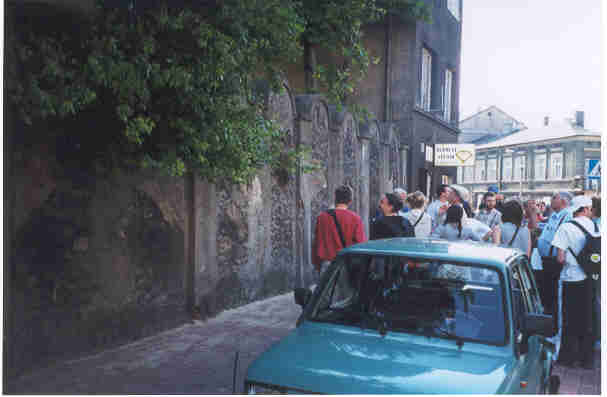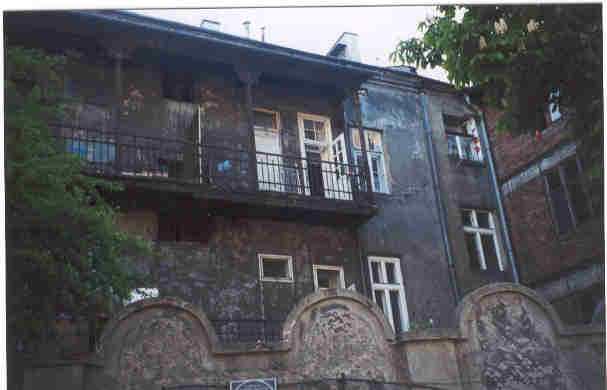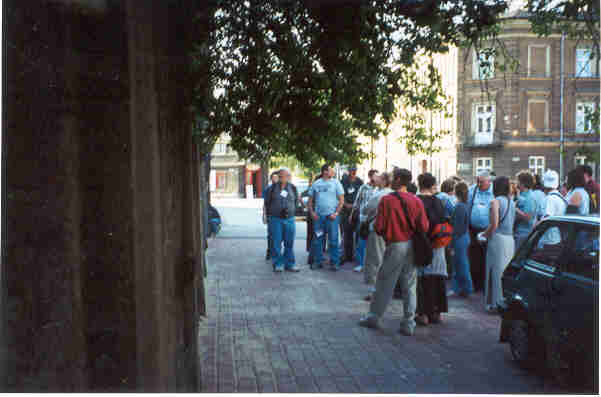|
|
|
 |
Krakow Ghetto |  |
|
Krakrow Ghetto |
||
 |
Last Section This is the last remaining section of the Krakow ghetto wall. {On a totally unrelated side note, this photo also contains a typical European car. For those of you who have never been to Europe, cars this size are everywhere. I am not going to take this opportunity to give a lecture on the value of fuel-efficient vehicles, but it is hard not to think about issues like that when you see how other countries live.} Enlarge Picture |
|
 |
Over the Wall This is the same section of the wall from the previous picture, but with a view of a building that was inside the barrier. As with seeing the actual places where people were gassed or cremated, it was an unsettling feeling to stand in the presence of the actual buildings that once housed the Jewish people who were forced into the ghettos. The ghettos provided an equally horrific life for the victims of the Nazis. While some people would consider the quick deaths of people who were killed the same day they entered the camps as a blessing, the deaths of people in the ghettos were much more torturous. People lived in a basic hell on earth, and the stories of human suffering from these places are almost unbearable. Enlarge Picture |
|
 |
Soon Will Be Gone If you look closely, you can see a thin layer of sand and dust between the wall and our group. This last piece of the wall is deteriorating and someday will be completely gone. We are only living sixty years after the events of The Holocaust and many of the physical remains of this event in history are in danger of disappearing. One of the goals of this Hope and Remembrance event for the participants is to act as historians and share our personal experiences from visiting these sites. Enlarge Picture |
|